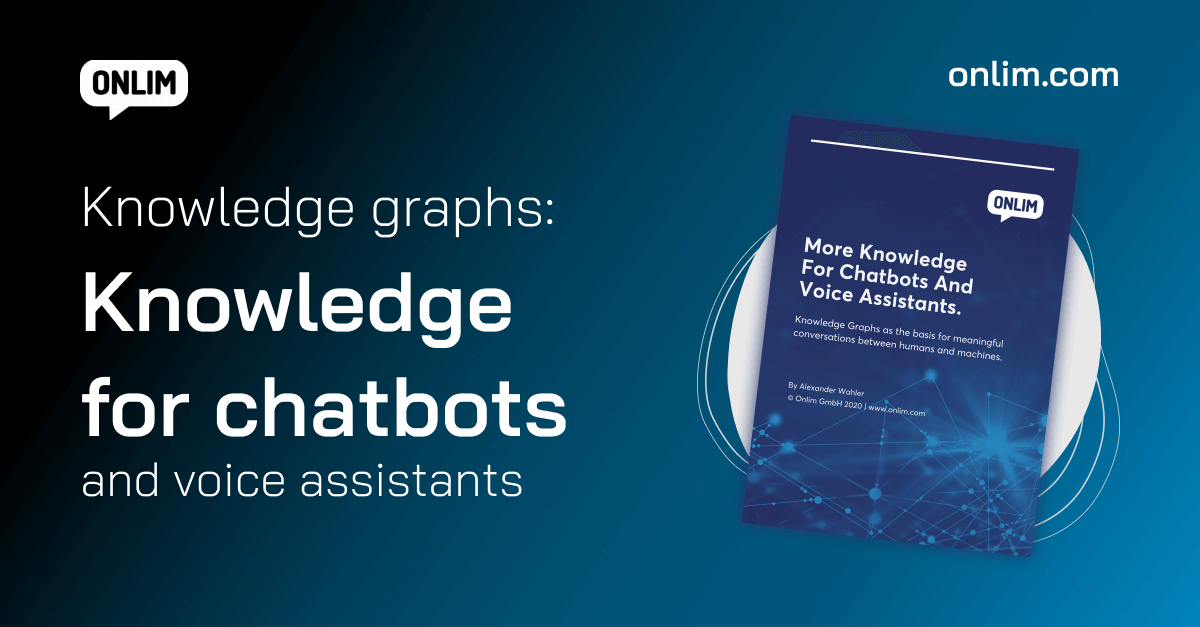What is Conversational AI?
Conversational AI refers to technologies such as chatbots or virtual agents that interact with users in natural language.
They are based on extensive data sets, use Machine Learning (ML) and process natural language to enable human-like communication. Systems based on conversational AI are able to process written or spoken text input.
Which technologies form the basis of Conversational AI?
Conversational AI is based on Natural Language Processing (NLP) and thus also on Machine Learning (ML). These basic technical components of Conversational AI enable natural language processing, -understanding and -generation.
Natural Language Processing (NLP)

Natural Language Processing is a method for analysing natural language via machine learning. NLP comprises four steps: input generation, input analysis, output generation and reinforcement learning. Unstructured data is converted into a format that can be analysed by the computer to generate an adequate response. The underlying ML algorithms continuously improve the quality of the responses by learning from experience.
These four NLP steps can be detailed as follows:
- Input generation: Users enter their input either by voice or text via, for example, a chatbot.
- Input analysis: If the input is text-based, Conversational AI uses Natural Language Understanding (NLU) to decipher the meaning of the input and understand its intent. For speech-based input, a combination of automatic speech recognition (ASR) and NLU is used.
- Output generation: In this phase, an appropriate response is formulated via Natural Language Generation (NLG).
- Reinforcement learning: Finally, the ML algorithms are continuously improved to increase the quality of the answers.
Machine Learning (ML)

Machine learning is a sub-field of artificial intelligence that is able to learn from experience and make predictions or decisions based on this experience. By analysing training data, specific patterns and correlations can be identified. Learn more about Machine Learning and the Deep Learning that falls under it: xx.
How does Conversational AI differ from a traditional chatbot?

Conversational AI can draw on larger amounts of data and is therefore better able to understand and respond to contextual statements. In contrast, conventional chatbots usually rely on pre-formulated answers and do not use Natural Language Generation. This means that conventional chatbots can only answer a small, predefined number of questions.
As a result, the use of conversational AI guarantees an authentic dialogue experience that a conventional chatbot cannot achieve.
Challenges of Conversational AI
Conversational AI is an advanced area of technology, but it also presents some challenges.
- One of the main problems is that natural language is very complex and diverse. Accordingly, it is difficult to train an conversational AI platform to understand and respond to all possible linguistic variations and deviations.
- Another challenge is that human language can often be ambiguous and incomplete. Conversational AI must therefore be able to recognise the meaning behind words and understand the context in order to generate adequate responses.
- Another problem is the lack of ability of Conversational AI to recognise and respond to human emotions and needs. This can lead to users being dissatisfied with the quality of responses or feeling that they are not being treated appropriately.
Opportunities of Conversational AI
Conversational AI offers numerous opportunities and possibilities in various areas, such as:
- Improved customer interactions: Conversational AI technologies such as chatbots and virtual assistants can help businesses provide better customer interactions. They can answer customer queries quickly and effectively, increasing customer satisfaction.
- Effective automation: with Conversational AI, repetitive and time-consuming tasks can be automated, such as answering frequently asked questions or booking appointments.
- Increasing efficiency: by using Conversational AI, businesses can improve efficiency by reducing the time it takes to process enquiries while minimising errors.
- Improving business processes: Conversational AI systems can also help to streamline and improve business processes, for example by providing real-time information and helping to increase operational efficiency.
More Knowledge For Chatbots And Voice Assistants

Conclusion

The use of conversational AI enables an authentic dialogue experience and offers numerous opportunities, such as improved customer interactions and effective automation.
However, there are also challenges, such as the difficulty in understanding and responding appropriately to natural language, and the lack of ability of Conversational AI to recognise human emotions and needs.
Nevertheless, Conversational AI remains a promising area of technology that, as it develops and evolves, will be able to respond even better to users’ needs.
Retrieval Augmented Generation (RAG)
July 10th, 2024|
Is a voicebot right for my company?
June 18th, 2024|
What is Generative AI?
June 11th, 2024|



